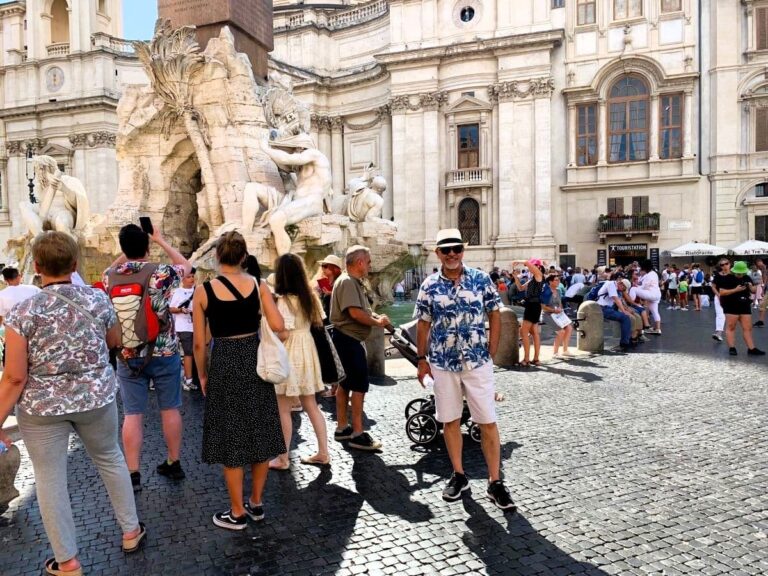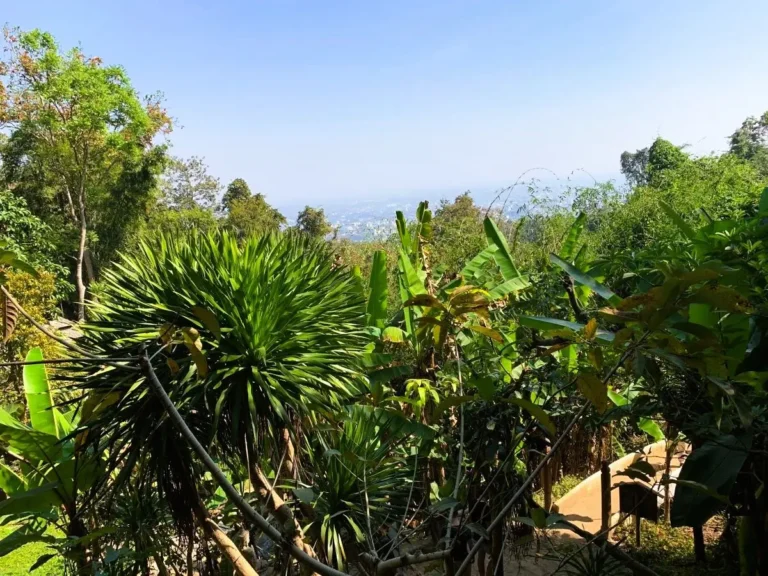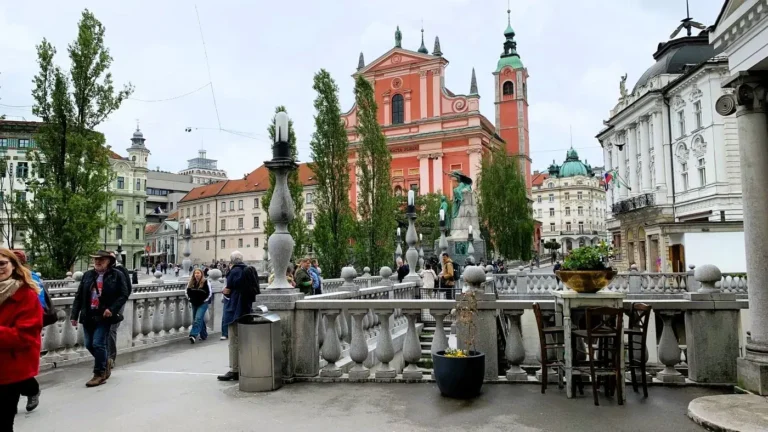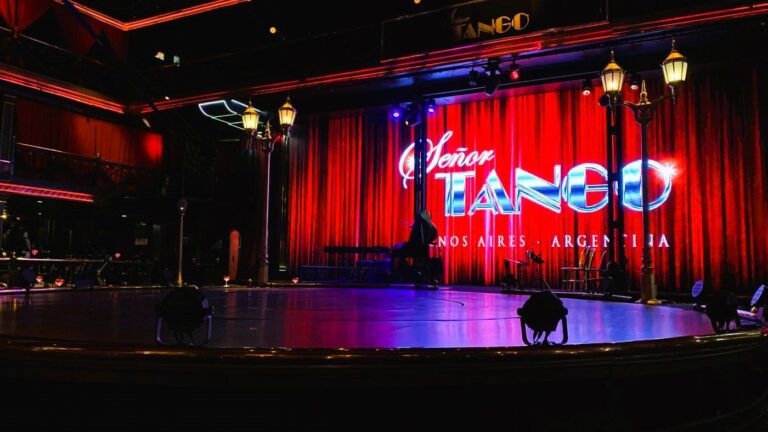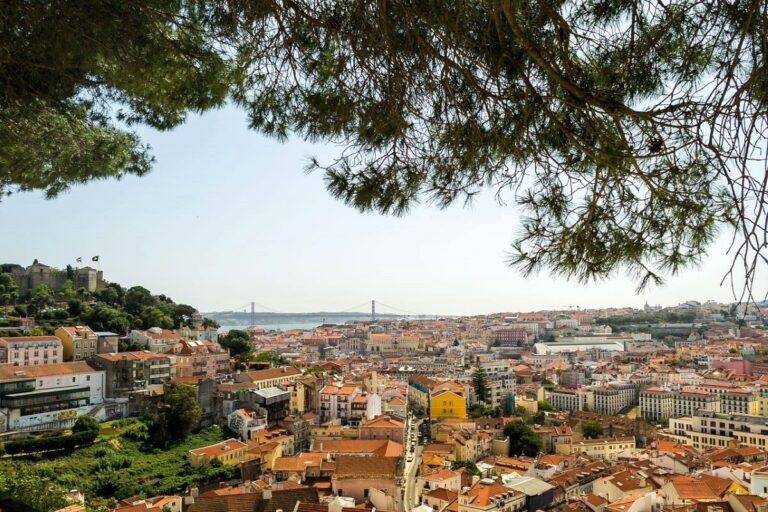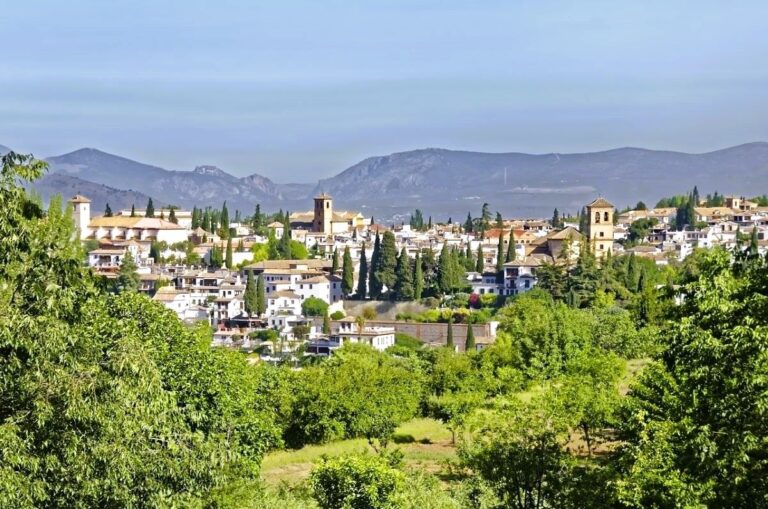JAPAN TRAVEL GUIDE (2025): DISCOVER THE MAGIC OF JAPAN
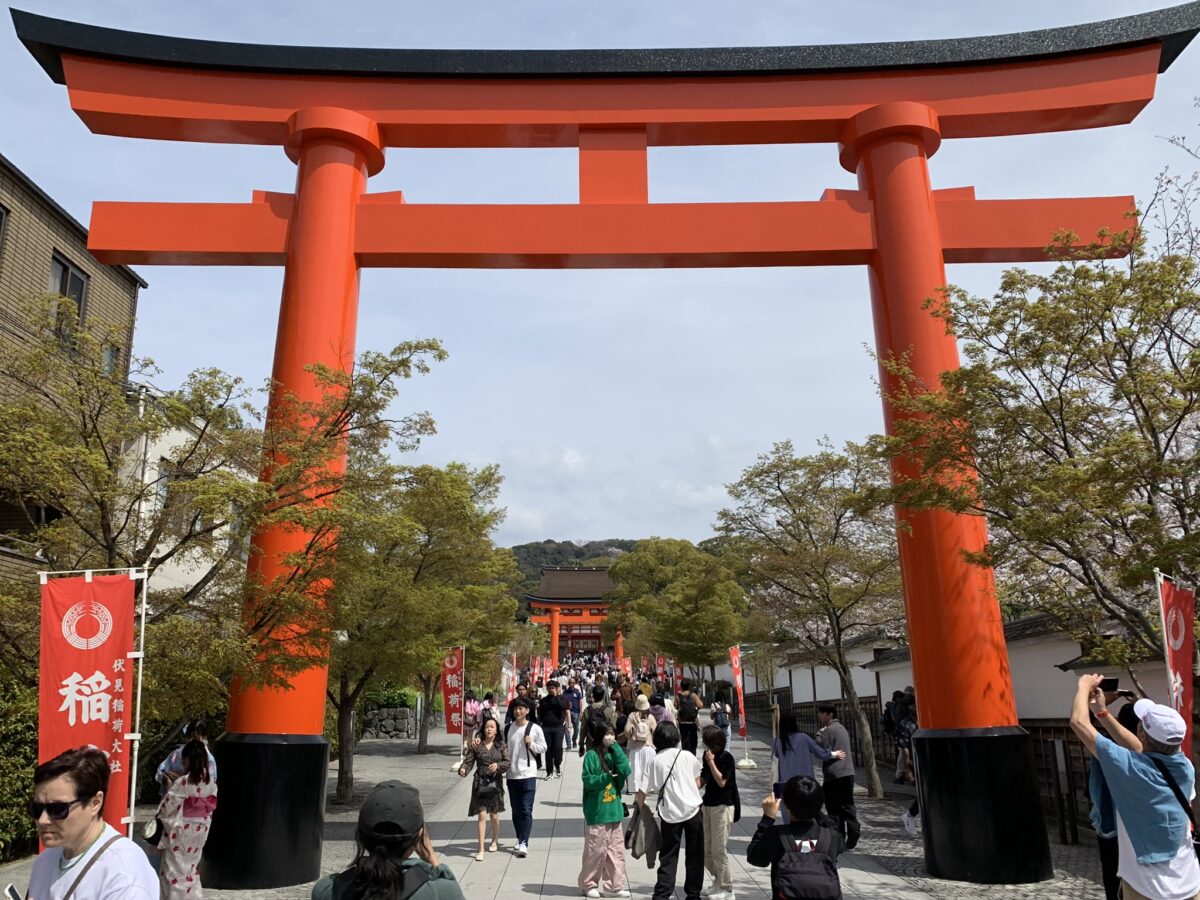
This is a quick and easy Japan travel guide to help you navigate this country with ease. Japan is an amazing blend of old traditions and cutting-edge modern life. There are bustling cities like Tokyo and Osaka with towering skyscrapers, neon lights, and quirky cafes, while just a short ride away you’ll find peaceful temples, tranquil gardens, and historic shrines.
You can dive into rich culture by exploring tea ceremonies, trying on a kimono, or visiting the famous hot springs (onsen). Plus, the food – ramen, sushi, tempura – is a whole experience in itself.
It’s a country where ancient meets futuristic, all with a touch of friendly hospitality. You’ll never get bored!
Our Journey to Japan
We were in Japan for 3 weeks in April of 2024. We spent 2 weeks in Osaka, and 1 week in Tokyo.
From Osaka you can do a number of day trips. We made 3 day trips to Kyoto, which is about 30 minutes journey by train, and 1 each to Nara, Kobe and Hiroshima. Nara and Kobe are both under an hour by train, and Hiroshima is about 1 hour 30 minutes away by bullet train, also called “Shinkansen”.
We were lucky to be there during the cherry blossom season and the cherry trees were in full bloom, especially in Osaka, Kyoto and the surrounding region. Since many people come to see the cherry blossoms it was packed with tourists.
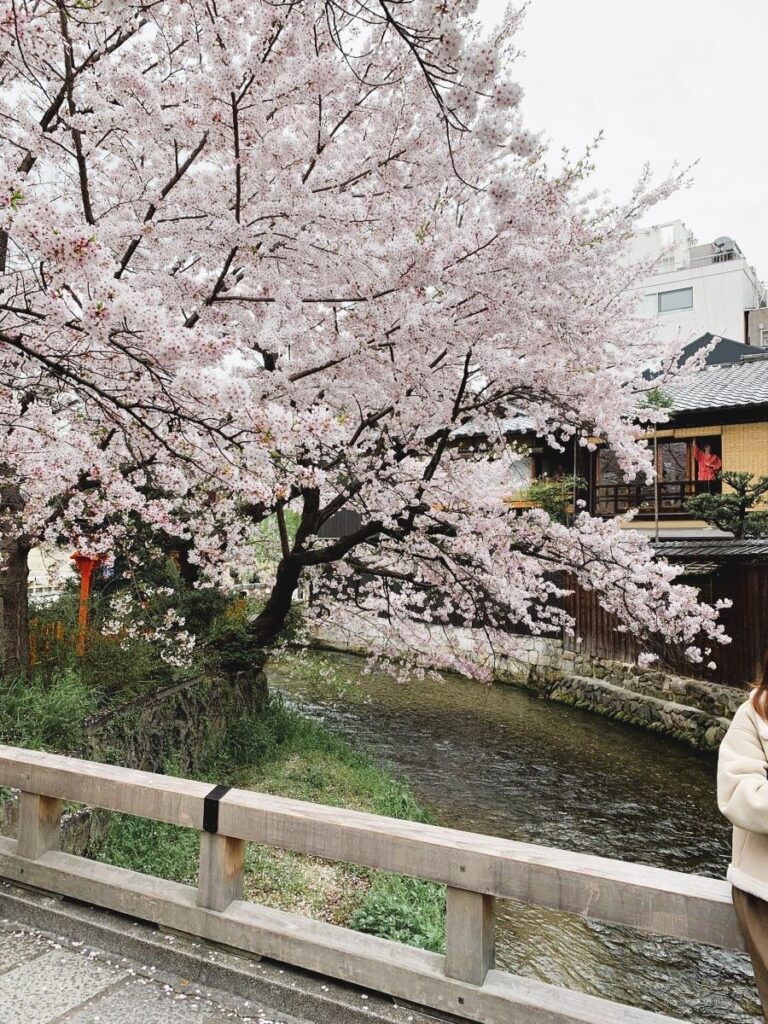
To learn about when to visit Japan for cherry blossom season visit here.
Japanese Culture: Unique and Beautiful
Respect, cleanliness, and hospitality are at the heart of Japanese culture. Bowing is common as a polite greeting. People remove shoes before entering homes. You’ll also notice how everything from packaging to food presentation is done with care.
Cultural experiences not to miss:
- Tea ceremony
- Sumo matches
- Kimono-wearing experiences
- Seasonal festivals like cherry blossom (sakura) viewing
Mastering Japanese Manners and Etiquette: How to Bow Like a Local
When visiting Japan for the first time, understanding the nuances of the Japanese bow can be both intriguing and essential. In Japanese manners and etiquette, bowing isn’t just a gesture—it’s a vital part of social interaction.
Buddhism and Shintoism in Japan: Comparing Sacred Spaces
At the heart of the cultural tapestry of Japan are two major religions: Buddhism and Shintoism. These two religions have shaped Japanese culture and society for centuries, coexisting and complementing each other in fascinating ways.
Japanese Food: So Much More Than Sushi
Japanese food is fresh, flavorful, and beautifully presented. It’s also very affordable at local restaurants and street stalls.
Some must-try dishes:
- Sushi & Sashimi
- Ramen – Noodles in savory broth
- Okonomiyaki – Japanese savory pancake
- Takoyaki – Fried octopus balls
- Kaiseki – Traditional multi-course meal
You’ll also find vending machines that serve hot meals and convenience store snacks that are surprisingly delicious! We ate a lot from the 7-Elevens in Japan. 🙂
Must-Visit Cities in Japan
Here are a few cities you shouldn’t miss:
Tokyo – Modern & Electric
Japan’s capital is a buzzing mix of skyscrapers, quirky neighborhoods, and ancient temples. Explore Shibuya, shop in Harajuku, visit the historic Asakusa area, and eat your way through Tsukiji.
For a 5-day trip to Tokyo, check out my The Ultimate 5-Day Itinerary in Tokyo: Explore the Sights, Food, and Culture
Kyoto – Traditional Japan

Famous for its temples, geisha districts, and tea houses. Don’t miss Fushimi Inari Shrine (with thousands of red torii gates) and the bamboo grove in Arashiyama.
If you’re planning to visit Kyoto, check out: Discovering Kyoto: A Timeless Journey Through Japan’s Cultural Gem
Osaka – Foodie Heaven

Known for its street food, friendly locals, and fun vibes. Try takoyaki and visit Dotonbori for neon lights and nightlife.
For more on why you should visit Osaka, read my post: Is Osaka Worth Visiting? 11 Unmissable Highlights for First-Time Visitors
For best time to visit Osaka: Best Time to Visit Osaka: A Seasonal Guide for Travelers
Hiroshima – History & Peace
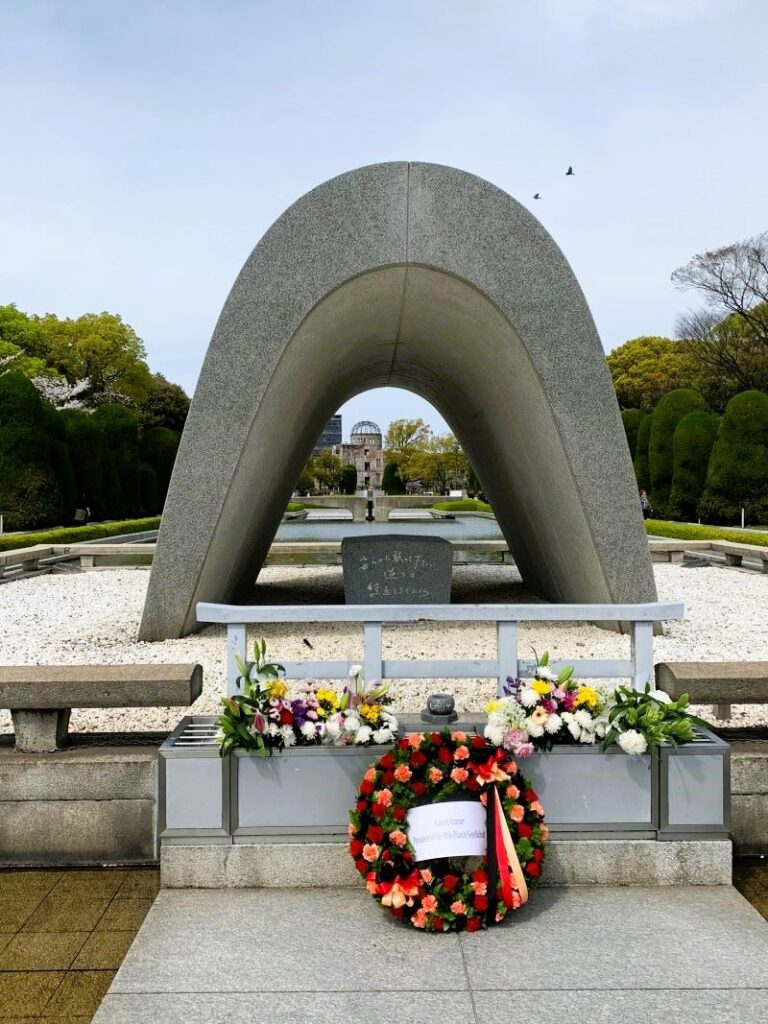
Learn about the past at the Peace Memorial Park and Museum. Also visit nearby Miyajima Island, home to the famous floating torii gate.
For a day-trip to Hiroshima, check out my post: A Perfect Day Trip to Hiroshima: Tips, Itinerary and Historical Insights
Nara – Deer & Temples
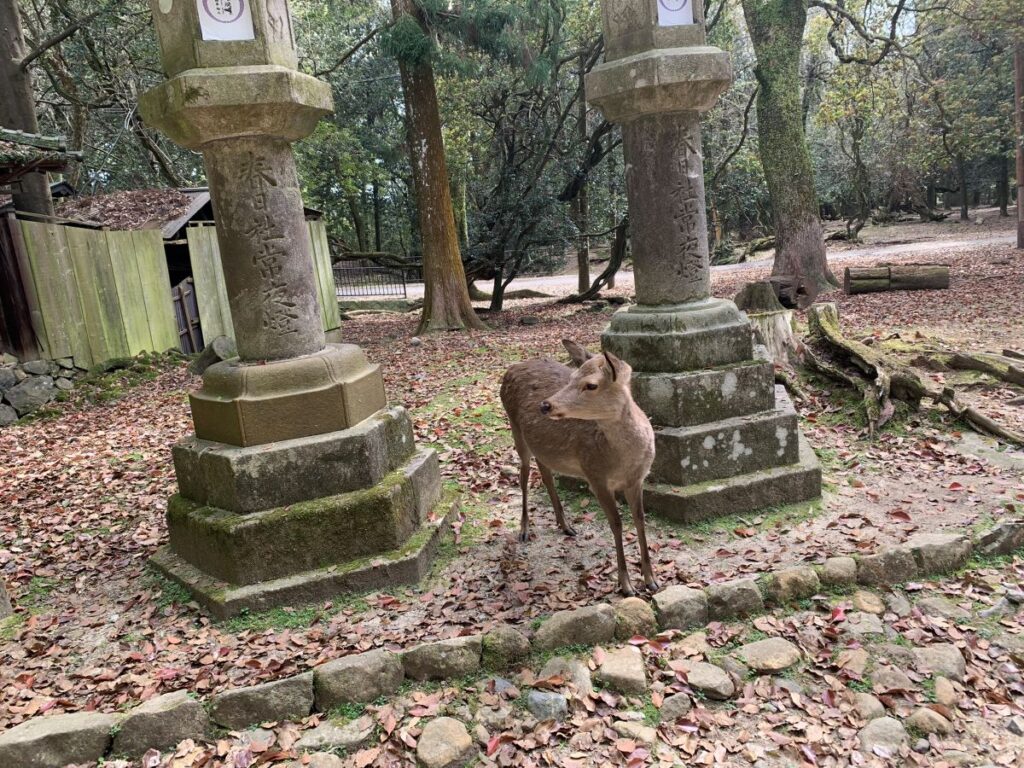
Just a short trip from Osaka or Kyoto. Say hello to the free-roaming deer and visit Todai-ji Temple, home to a giant Buddha statue.
For more on how to visit Nara Park visit: How to spend a perfect day feeding deer and enjoying the attractions of Nara Park
Best Times to Visit Japan
Japan has four distinct seasons. Here’s when to go depending on what you want to see:
- Spring (March to May): Cherry blossoms, pleasant weather
- Summer (June to August): Hot and humid, but great for festivals
- Autumn (September to November): Beautiful fall colors, mild temperatures
- Winter (December to February): Snowy mountains, hot springs, and skiing
Spring and autumn are the most popular—and beautiful—times to visit.
Entry & Visa Requirements For Japan
For many travelers, Japan is visa-free for short stays (usually up to 90 days). This includes citizens from the U.S., Canada, EU countries, Australia, and many others.
Before you go:
- Make sure your passport is valid for the length of your stay.
- You may need to register with the Visit Japan Web portal to speed up airport procedures.
- Always double-check official embassy websites for the latest rules.
Bullet Trains in Japan: What You Need to Know
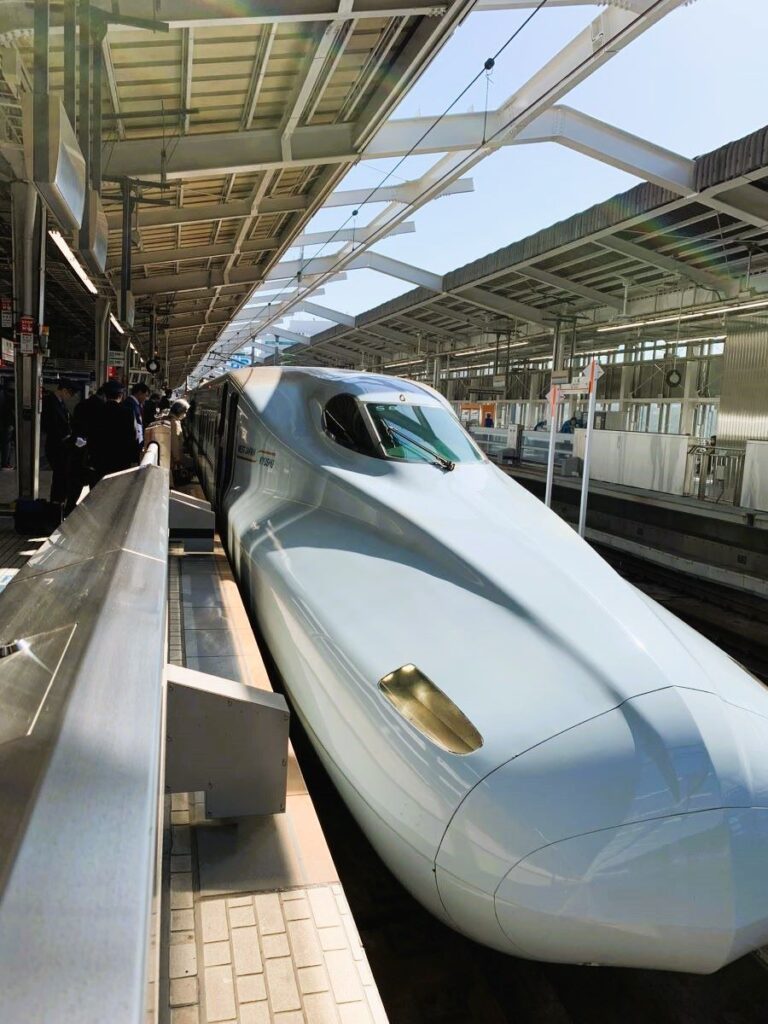
Japan’s bullet trains, known as Shinkansen, are famous around the world for being fast, clean, safe, and incredibly punctual. They’re one of the best ways to explore the country—especially if you’re traveling between major cities like Tokyo, Kyoto, Osaka, and Hiroshima.
Here’s everything you need to know to ride the Shinkansen like a pro:
What Is the Shinkansen?
The Shinkansen is Japan’s high-speed train network. These trains can travel up to 320 km/h (199 mph) and connect most major regions of the country.
Main Shinkansen lines for tourists:
- Tokaido Line: Tokyo ⇄ Kyoto ⇄ Osaka (most popular route)
- Sanyo Line: Osaka ⇄ Hiroshima ⇄ Fukuoka
- Tohoku Line: Tokyo ⇄ Sendai ⇄ Aomori (north of Japan)
- Kyushu Line: Fukuoka ⇄ Kumamoto ⇄ Kagoshima
How to Buy Tickets
There are a few ways to get Shinkansen tickets:
- At the Station: Use ticket machines or go to the JR Ticket Office (“Midori no Madoguchi”).
- Online: Use the official JR websites or travel apps like SmartEX, Japan Travel by Navitime, or Klook.
- With a Japan Rail Pass: If you plan to travel a lot by train, this is the best value (more on that below).
Two seating types:
- Reserved Seats: You get an assigned seat. Best during busy seasons.
- Non-Reserved Seats: First-come, first-served. Cheaper, but may be crowded.
Japan Rail Pass: A Smart Deal
If you’re visiting multiple cities, get a Japan Rail Pass (JR Pass) before arriving in Japan. It gives you unlimited rides on most JR trains—including many Shinkansen lines.
Key points:
- Must be purchased before entering Japan (or through authorized sites).
- Available in 7, 14, or 21-day versions.
- Great value if you’re doing round trips like Tokyo ⇄ Kyoto ⇄ Hiroshima.
Pro Tip: Make seat reservations for free with your JR Pass at any JR office.
Luggage on the Shinkansen
- You can bring luggage onboard, but there are size limits.
- Bags over 160 cm (total of height + width + depth) need a seat reservation with luggage space.
- There’s overhead space for smaller bags, and room behind the last row for larger suitcases.
- You can also use luggage delivery services to send your bags between hotels—very convenient!
What to Expect on Board
- Clean and spacious seats with tray tables.
- Toilets and washrooms in every car.
- Quiet cars—keep phone calls to a minimum.
- You can bring your own food or buy an ekiben (train bento) from station shops—delicious and themed to local specialties!
Finding the Right Train
- Look for signs marked “Shinkansen” in English at any major station.
- Trains are labeled by name (e.g., Nozomi, Hikari, Kodama).
- Nozomi is the fastest, but not covered by the JR Pass.
- Hikari is slightly slower but included in the JR Pass.
- Kodama stops at all stations—best for local trips.
Tip: Arrive at least 10–15 minutes early. Trains are extremely punctual—they won’t wait!
Which Shinkansen Class to Choose?
- Ordinary Class: Comfortable, similar to airline economy with generous legroom.
- Green Car: Like business class—larger seats, quieter cars, fewer people.
- Gran Class: First class luxury, includes reclining seats and sometimes meal service (available on select lines).
Final Train Tips for Travelers
- Suica/Pasmo cards don’t work for Shinkansen—you need a specific ticket or JR Pass.
- Use Hyperdia or Japan Travel App to check schedules and routes.
- Food and drink are welcome onboard—but take your trash with you.
- Always stand behind the yellow line while waiting on the platform.
- Most Shinkansen stations are well-signed in English, so it’s easy to find your way.
Why Ride the Shinkansen?
Besides being super convenient, the Shinkansen is just fun to ride. Watching the countryside fly past at high speed, enjoying a bento box, and arriving on time every time—it’s an experience that’s uniquely Japanese.
Final Tips Before You Go
- Carry some cash—not all places accept cards.
- Rent a pocket Wi-Fi or get an eSIM to stay connected.
- Bring comfortable shoes—you’ll walk a lot!
- Get a Suica or Pasmo card to easily use public transport.
Ready to Explore Japan?
Japan is clean, safe, and filled with unforgettable sights and experiences. Whether you’re slurping ramen in a tiny shop, relaxing in a hot spring, or watching the sunrise over Mount Fuji, Japan is a trip you’ll never forget. Hope this Japan Travel Guide was useful.
Start planning your adventure today!
Related Posts:
- How to spend a perfect day feeding deer and enjoying the attractions of Nara Park
- Discovering Kyoto: A Timeless Journey Through Japan’s Cultural Gem
- A Perfect Day Trip to Hiroshima: Tips, Itinerary and Historical Insights
- Is Osaka Worth Visiting? 11 Unmissable Highlights for First-Time Visitors
- Best Time to Visit Osaka: A Seasonal Guide for Travelers
- The Ultimate 5-Day Itinerary in Tokyo: Explore the Sights, Food, and Culture
Recent Posts:
-
The Best Florence 3-Day Itinerary For First Timers (Landmarks, Views, And Food)
Planning a trip to Florence? Awesome! You’re in for a treat! Florence packs centuries of art, culture, and history into streets that are super easy to wander on foot. This Florence 3 day itinerary is built for first-time visitors who want the big sights, plus time to eat well, shop a little, and wander without…
-
Your Ultimate 3-Day Itinerary in Rome (First-Time Visit Guide)
Arriving in Rome, the Eternal City, for the first time feels like stepping into a living history book. I’m not kidding. Everywhere you turn you find ancient ruins, renaissance churches, and fountains, sometimes sharing the same charming streets. The city buzzes with energy, from the scooters zipping by to the lively piazzas filled with people…
-
The Ultimate Italy Travel Guide for First‑Time Visitors (Simple, Honest Tips)
Italy is one of those places that lives in your head long before you land. Ancient ruins, quiet churches, busy piazzas, long dinners, and trains that carry you from city to city like scenes in a film. When friends ask me where they should go on their first big trip to Europe, Italy is usually…
-
Travel Chiang Mai, Thailand: A Calm Base for Temples, Markets, and Food
Your Ultimate Travel Chiang Mai Thailand Guide Chiang Mai sits in a green valley in northern Thailand, ringed by low mountains and crowned by temples that have been there for centuries. Key Takeaways: This Travel Guide to Chiang Mai, Thailand also shares a simple 3-day plan you can follow without stress. The Old City, with…
-
Lake Bled Day Trip: The Perfect First-Time Adventure from Ljubljana
Welcome! If you’re spending time in Ljubljana and want to experience Slovenia’s most magical landscapes, a Lake Bled day trip from Ljubljana is an easy choice. With its glacial blue water, Lake Bled Island at its center, and Bled Castle perched high on the cliffs, this spot looks straight out of a fairytale—no need for…
-
Best Things to Do in Ljubljana, Slovenia (First-Time Visitor’s Guide)
Welcome! Thank you for visiting my blog about the best things to do in Ljubljana! In this guide I’ll share my own favorite spots and handy tips, best places to eat and some local insights you might not find elsewhere. Ljubljana, the charming capital of Slovenia, is stunning! The architecture is breathtaking! I promise you,…


